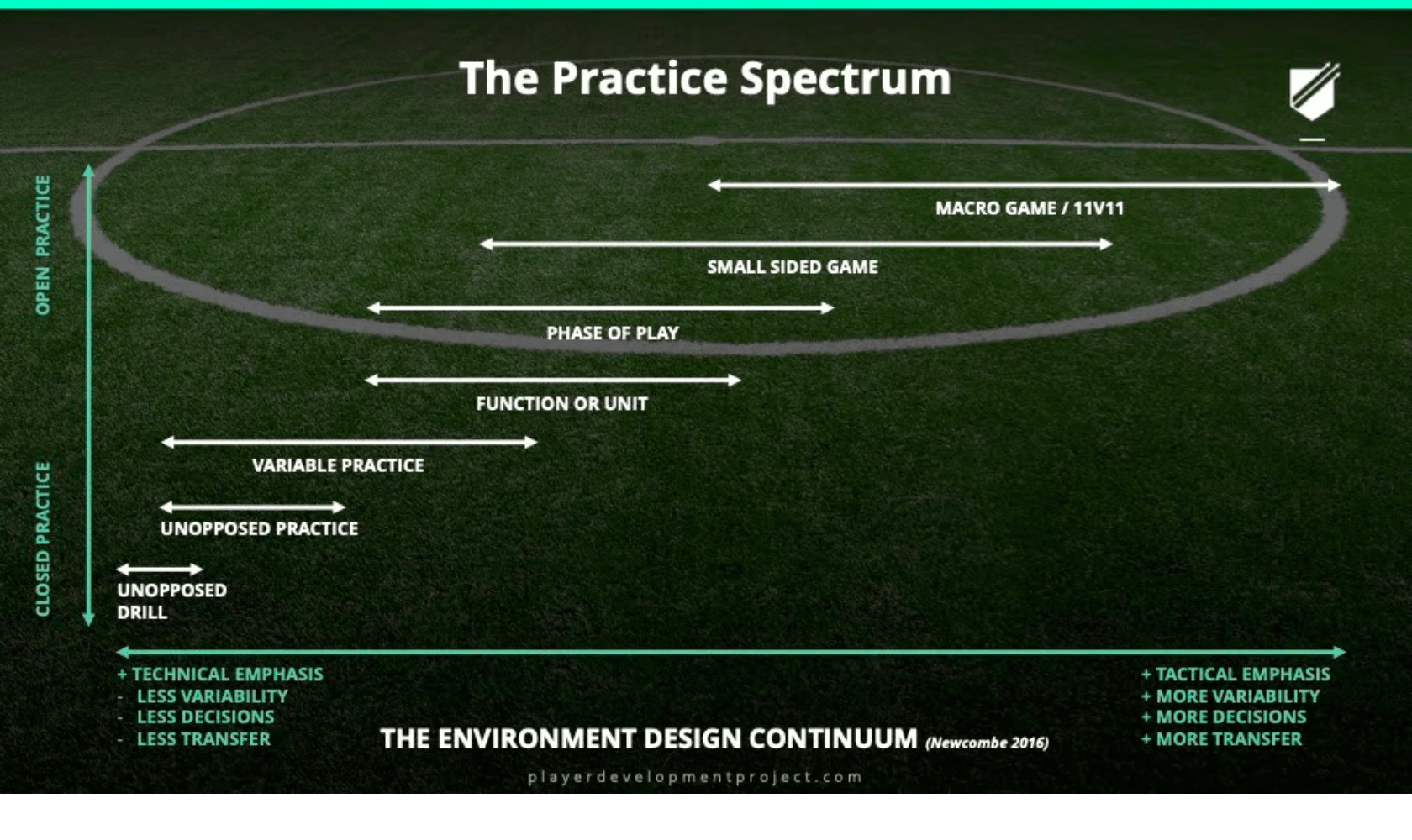Reader,
Whether it’s on Twitter, online coaching communities or face-to-face, there is always a constant debate around opposed vs. unopposed training and its impact on skill acquisition.
In the world of academia, researchers and coaches work to test and examine different approaches. This debate is healthy and should be encouraged.
One of the best models to emerge from this discussion is Danny Newcombe’s practice spectrum, which outlines how coaches can move through the practice design continuum from isolated/unopposed to the fully opposed 11v11 game.
 |
For me, there is a huge amount of grey in this debate, and the most important factor in what type of practice is relevant is the context you’re working in.
For example, if you have one session per week with a group of U10 players, it could be said this is most likely to be a community, grassroots environment where children are playing for the love of the game, to learn the game and develop their skills.
So, drilling children with high repetition unopposed work may be detrimental when it comes to player engagement, enjoyment or stimulation. I would argue that setting up your session to include one ball, two goals and direction (the game) would be a far better place to start in this setting.
To contrast this, if you are working in a professional environment with a group of U23 players who train 5-6 times per week you now have significantly increased contact time and need to consider things like physical loading and variety in their week.
I have worked with ex-professional players who often speak about “developing feel” for striking the ball well, hitting the back of the net, repetition of passing and receiving. I can certainly see the value in ensuring that players enjoy success every week in some way, and have confidence when dealing with the ball.
In between the small-sided-game for U10s or the unopposed passing or finishing practice for professional players, sits a myriad of opportunities for coaches to create activities with a variety of challenge points to help players develop.
Over time and with experience as a coach, you will gain a better understanding of how and when you can move up and down the spectrum in either context, understand the trade-offs, and deliver quality sessions at both ends.
Three things to consider.
- What is your context and how do you plan your sessions in line with the amount of contact time, and the age and stage of the players in your care?
- Do you ensure that at least 20 minutes of every session is free play?
- Do you understand the implications of removing critical variables from a practice? Examples of critical variables could be opposition, interference, pressure or decision making.
One thing for you to try this week.
Consider designing a session which moves across the practice spectrum from unopposed or interference based, to the game and try and get a feel as to which part the players engage more with.
One critical resource on the topic.
If you want to better understand how to manipulate and apply the practice spectrum in your environment, check out our range of world-class online coaching courses by clicking here now.
